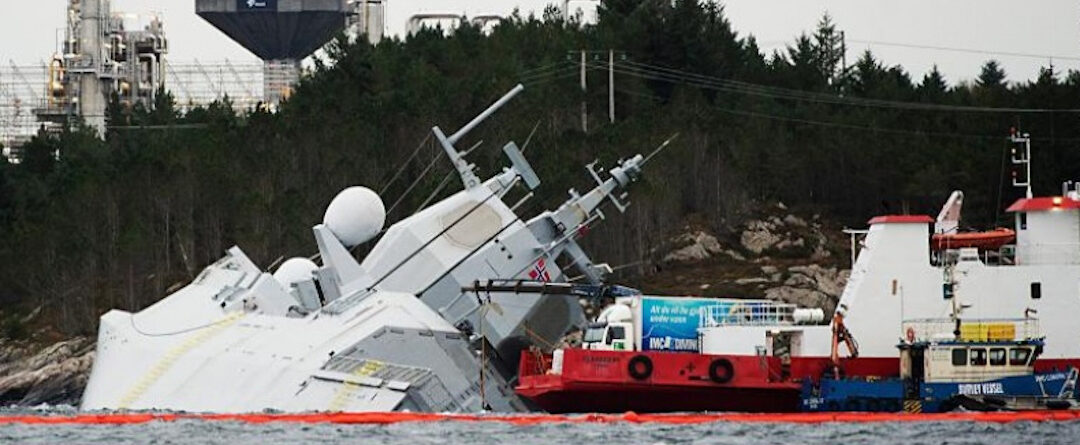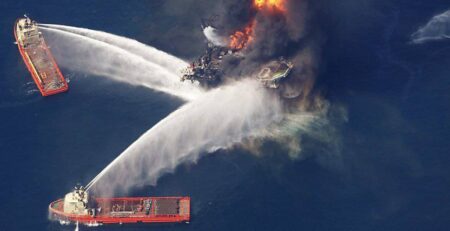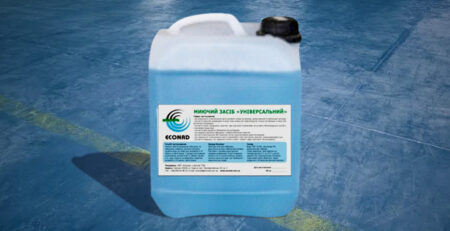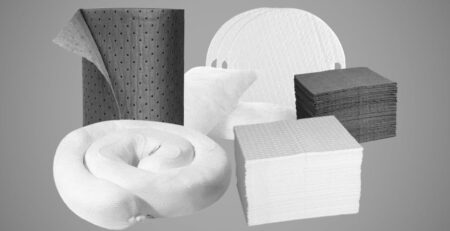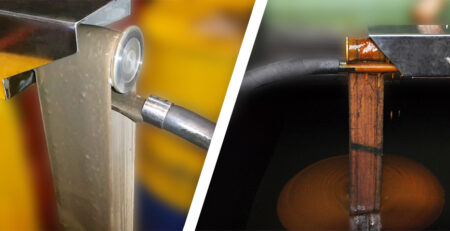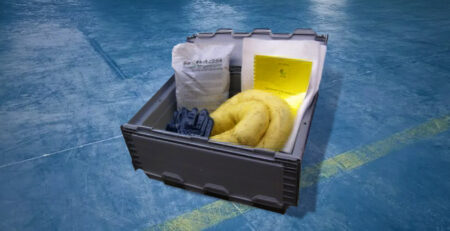International Regulations for Preventing Collisions at Sea PART E
International Regulations: Part E
Seizures
Rule 38. SEIZURES
Any ship (or type of ship) the keel of which is laid or which is at an appropriate stage of construction prior to the entry into force of these Rules, provided that it complies with the requirements of the International Regulations for Preventing Collisions at Sea, 1960, may be exempted from of these rules regarding:
- a. the installation of lights with the visual range prescribed by Regulation 22 for up to four years after the date on which these Regulations come into force;
- b. the installation of lights with the color characteristics prescribed in paragraph 7 of Annex I to these Regulations, for a period of up to four years after the date of entry into force of these Regulations;
- c. permutations of lights in connection with the transition from the standard English system of units to the metric and rounding of the measured values at all times;
- d.
- i. positioning of the mast lights on ships less than 150 meters in length, in accordance with the provisions of paragraph 3 (a) of Annex I to these Regulations, at all times;
- ii. repositioning of mast lights on vessels of 150 meters or more in length in accordance with the provisions of paragraph 3 (a) of Annex I to these Regulations, for up to 9 years after the date of entry into force of these Regulations
into effect;
- e. rearrangement of masthead lights in accordance with the provisions of paragraph 2 (b) of Annex I to these Regulations – for a period of up to 9 years after the date of entry into force of these Regulations;
- f. rearrangement of side lights in accordance with the provisions of paragraphs 2 (g) and 3 (b) of Annex I of this Regulation – for up to 9 years after the date of entry into force of these Regulations;
- g. requirements for sound signaling devices prescribed by Annex III to these Rules – for a period of up to 9 years after the date of entry into force of these Rules;
- h. rearrangement of all-round lights as prescribed in paragraph 9(b)
Appendix 1
LOCATION AND TECHNICAL CHARACTERISTICS OF LIGHTS AND SIGNS
1. DEFINITION
The term “height above the hull” means the height above the uppermost continuous deck.
This height is to be measured from a point on the vertical below the place of installation of the light.
2. VERTICAL ARRANGEMENT OF LIGHTS AND DISTANCES BETWEEN THEM
a. On a power-driven vessel of 20 m or more in length, mast lights shall be positioned as follows:
- i. the forward mast light, or if there is only one mast light, then this light is not less than 6 m above the hull, and if the beam of the vessel exceeds 6 m, then at a height above the hull not less than this beam, but this light need not be was at a height of more than 12 m above the hull;
- ii. if a vessel carries two masthead lights, the aft one shall be at least 4.5 m higher in the vertical line than the forward light.
b. The vertical distance between the masthead lights in power-driven vessels shall be such that, under all normal trim conditions, the rear light is visible above and separated from the forward light at a distance of 1000 m from the stem as seen from sea level.
c. The masthead light of a power-driven vessel of 12 m or more in length but less than 20 m shall be located at a height of at least 2.5 m above the gunwale.
d. A power-driven vessel less than 12 m in length may carry the uppermost light not less than 2.5 m above the gunwale. However, if it carries a masthead light in addition to the sidelights and sternlights or carries an all-round light prescribed in Rule 23(c)(i) in addition to the sidelights, such masthead or all-round light must be located at least 1 m above the sidelights.
e. One of the two or three masthead lights prescribed for a power-driven vessel when she is towing or pushing another vessel shall be located in the same position as the forward or aft masthead light; if mounted on a rear mast, the lowest of the aft mast lights shall be at least 4.5 m higher vertically than the forward mast.
f.
- i. The masthead light or lights prescribed in Rule 23(a) must be so placed that they are clearly visible above all other lights and structures, unless
described in subparagraph (ii); - ii. where it is not practicable to place the all-round lights prescribed in Rule 27b)(i) or 28 below the masthead lights, they may be displayed above the rear mastlight(s) or at a height between the forward
top light(s) and rear top light(s); in the latter case, the requirements of paragraph 3(c) of this Annex must be met.
g. The side lights of a power-driven vessel shall be located at a height above the hull not more than three quarters of the height of the forward mast light. They should not be so low that their visibility interferes with
deck lights.
h. Side lights, when in a combination lamp and when carried by a power-driven vessel less than 20 m in length, shall be located not less than 1 m below the mastlight.
i. Where the Rules require a ship to carry two or three lights in a vertical line, the distances between the lights shall be as follows:
- i. on a ship of 20 m or more in length, the distance between such lights shall be at least 2 m, and the lower of them shall be located at a height of at least 4 m above the hull; this latter requirement does not apply to a stern light when a vessel carries both a stern and a towing light at the same time;
- ii. on a ship less than 20 m long, the distance between such lights shall be at least 1 m, and the lower of them shall be at least 2 m above the gunwale; this last requirement does not apply when the vessel carries both stern and towing lights at the same time;
- iii. if a ship carries three lights, they should be placed at equal distances from each other.
j. The lower of the two all-round lights prescribed for a vessel engaged in fishing shall be located above the side lights at a height not less than twice the vertical distance between these all-round lights.
k. When a vessel is exhibiting two anchor lights, the bow anchor light prescribed in Rule 30(a)(i) shall be not less than 4.5 m above the stern light. 6 m above the hull.
3. HORIZONTAL ARRANGEMENT OF LIGHTS AND DISTANCES BETWEEN THEM
a. Where two masthead lights are prescribed for a power-driven vessel, the horizontal distance between them shall not be less than half of the vessel’s length, but need not exceed 100 m. The forward light shall be located at a distance not exceeding a quarter of the vessel’s length from the stem.
b. On a power-driven vessel of 20 m or more in length, sidelights shall not be placed in front of the forward masthead light. They should be located on the sides or close to the sides of the ship.
c. When the lights prescribed in Rule 27(b)(i) or 28 are located at a height between the forward masthead light(s) and the aft mastlight(s), these all-round lights shall be projected at least 2 m from the ship’s centreline.
4. LOCATION OF INFORMATION LIGHTS AND SIGNS ON FISHING VESSELS AND VESSELS ENGAGED IN DREDGING OR UNDERWATER WORK
a. The light prescribed in Rule 26(c)(ii) to indicate the direction of the sweeping gear from a vessel engaged in fishing shall be placed at a distance of not less than 2 m and not more than 6 m horizontally from the two red and white circular
of the lights prescribed in Rule 26(c)(i) and that said light must be placed no higher than the white light and no lower than the side lights.
b. The lights and shapes of a vessel engaged in dredging or underwater work prescribed in Rule 27(d)(i) and (ii) to indicate the side on which an obstruction exists and/or the side on which another vessel can safely pass shall be located at the greatest possible horizontal distance, but in no case be less than 2 m from the lights and shapes prescribed in Rule 27(b)(i) and (ii). The top of these lights or shapes must in no case be higher than the bottom of the three lights or shapes prescribed in Rule 27(b)(i) and (ii).
5. SHIELDING FOR SIDE LIGHTS
Side lights on vessels of 20 m or more in length shall be equipped on the side facing the ship’s centreline with panels painted matte black and shall comply with the requirements of paragraph 9 of this Annex.
On ships less than 20 m in length, side lights shall be fitted on the side facing the ship’s centreline with panels painted matt black when necessary to meet the requirements of paragraph 9 of this Annex.
If a combination lamp with one vertical filament is used and very
a narrow partition between the green and red sections of the lantern, installation of external shields
not required.
6. SIGNS
a. Signs must be black and have the following dimensions:
- i. the ball must have a diameter of at least 0.6 m;
- ii. the cone must have a diameter of at least 0.6 m and a height equal to twice its diameter;
- iii. the cylinder must have a diameter of at least 0.6 m and a height equal to twice its diameter;
- iv. The rhombus should consist of two cones with a common base. The dimensions of the cone must comply with the requirements of subparagraph (ii).
b. The vertical distance between signs must be at least 1.5 m.
c. On a ship less than 20 m in length, smaller marks may be used in relation to the ship’s dimensions, and the distance between the marks may be reduced accordingly.
7. COLOR CHARACTERISTICS OF THE LIGHTS
The color characteristics of all lights prescribed by these Regulations must comply with the following standards, which are within the chart areas established for each color by the International Commission on Illumination (ICC). The area boundaries for each color are defined by the following coordinates:
- i. white
x 0.525 0.525 0.452 0.310 0.310 0.443 y 0.382 0.440 0.440 0.348 0.283 0.382 - ii. green
x 0.028 0.009 0.300 0.203 y 0.385 0.723 0.511 0.356 - iii. red
x 0.680 0.660 0.735 0.721 y 0.320 0.320 0.265 0.259 - iv. yellow
x 0.612 0.618 0.575 0.575 y 0.382 0.382 0.425 0.406
8. THE POWER OF THE LIGHT OF LIGHTS
a. The minimum luminous intensity of the lights shall be calculated by the formula:
I=3.43*10^6*T*D^2*K^(-D)
where I is the luminous intensity under operating conditions in candela;
T – light threshold 2 * 10 ^ (-7) lux;
D is the visibility range of the fire (illumination range) in nautical miles;
K is the transmittance of the atmosphere.
The value of the K factor for prescribed lights should be 0.8, which corresponds to a meteorological visibility of approximately 13 nautical miles.
b. Some luminous intensity values calculated using this formula are presented in the following table.
Light visibility range (illumination range) in nautical miles
Light intensity of fire in candela at K=0.8
1
2
3
4
5
6
0.9
4.3
12
27
52
94
Note: The maximum luminous intensity of the lights should be limited to avoid excessive glare. This should not be achieved by the use of dimming devices.
9. HORIZONTAL SECTORS
a.
- i. The ship’s side lights shall provide the minimum required luminous intensity in the bow direction. This force should decrease so that within 1 to 3 degrees beyond the boundaries of the established sectors, the light practically disappears.
- ii. The minimum required luminous intensity of the stern, masthead and sidelights must be provided along the arc of the horizon within the limits prescribed by Sector Rule 21, 5 degrees short of the sector boundary in a direction 22.5 degrees abeam. Further, the light intensity can decrease to 50% at the sector boundary; then it should gradually decrease so that within 5 degrees beyond the boundaries of the prescribed sectors, the light practically disappears.
b. All-round lights should be located in such a way that they are not obscured by masts, topmasts or structures within angular sectors of more than 6 degrees. This requirement does not apply to anchor lights prescribed in Rule 30 which need not be displayed at an excessive height above the hull.
10. VERTICAL SECTORS
a. Installed electric lights, with the exception of lights on sailing ships underway, shall provide in vertical sectors:
- i. at least the required minimum luminous intensity between 5 degrees above and 5 degrees below the horizontal plane;
- ii. at least 60% of the required minimum luminous intensity between 7.5 degrees above and 7.5 degrees below the horizontal.
b. Electric lights installed on sailing ships underway must provide in the vertical sectors:
at least the required minimum luminous intensity in the range of 5 above and 5 degrees below the horizontal plane;
at least 50% of the required minimum luminous intensity between 25 degrees above and 25 degrees below the horizontal plane.
For non-electric lights, these requirements should be met as far as possible.
11. POWER OF LIGHT OF NON-ELECTRIC LIGHTS
The minimum luminous intensity of non-electric lamps shall, as far as possible, correspond to the luminous intensity values given in Table 8 of this Annex.
12. FIRE MANEUVERING
Notwithstanding the provisions of paragraph 2(f) of this Annex, the maneuvering light provided for in Rule 34(b) must be located in the same longitudinal vertical plane as the mast or lights and, as far as practicable, at a height of at least 2 m vertically above the front top light. In this case, the maneuvering light must be located vertically at least 2 m above or below the rear top light. On a ship that has only one mast light, the maneuvering light, if any, shall be placed in the most visible place at a vertical distance of at least 2 m from the mast light.
13. APPROVAL
The design of lights and signs, as well as the installation of lights on a ship, must comply with the requirements of the relevant competent authority of the state whose flag the ship has the right to fly.
Appendix 2
ADDITIONAL SIGNALS FOR FISHING VESSELS FISHING IN CLOSE PROXIMITY TO EACH OTHER
1. GENERAL INSTRUCTION
The lights referred to in this Annex, when exhibited in accordance with Rule 26(d), must be located in the most conspicuous place at least 0.9 m away from the lights prescribed in Rule 26b)(i) and (c)(i). ), and below these lights. These lights shall be all-round and visible to a distance of not less than 1 mile, but less than the lights prescribed in these Rules for vessels engaged in fishing.
2. SIGNALS FOR VESSELS ENGAGED IN TOWING.
a. Vessels engaged in trawling, whether using bottom or pelagic gear, may exhibit:
- i. when they sweep the tackle – white fire over red, arranged in a vertical line;
- ii. when they pick their tackle – white light over red, arranged in a vertical line;
- iii. when the tackle is caught on an obstacle – two red lights located along a vertical line.
b. Each vessel engaged in pair trawling may display:
- i. at night – a searchlight beam directed forward and towards the other vessel of this pair;
- ii. when vessels are sweeping or selecting gear, or when their gear is caught in an obstruction, the lights prescribed in paragraph 2(a) of this Annex.
3. SIGNALS FOR VESSELS FISHING WITH PURSE SEINES
Vessels fishing with purse seines may display two yellow lights in a vertical line. These lights should flash alternately every second, the duration of light and darkness being the same. These lights may only be displayed when the movement of the vessel is obstructed by its fishing gear.
Appendix 3
TECHNICAL CHARACTERISTICS OF SOUND SIGNALING DEVICES
1. WHISTLES
a. The fundamental frequency of the signal should be in the range of 70-700 Hz. The range of audibility of the signal should be determined by such frequencies, which may include the fundamental and (or) one or more higher frequencies within the range of 180-700 Hz (+1%), providing the sound pressure levels specified in paragraph 1 (c) of this Annex below .
b. Fundamental frequency limits. In order to provide a sufficiently wide variety of whistle characteristics, the fundamental frequency should be within the following limits:
- i. 70-200 Hz for a vessel 200 m or more in length;
- ii. 130-350 Hz for a vessel 75 m or more in length but less than 200 m;
- iii. 250-700 Hz for a vessel less than 75 m in length
c. The strength of the sound and the range of audibility of the signal. The whistle installed on the ship must provide in the direction of maximum sound intensity and at a distance of 1 m from it such a sound pressure level that in at least one 1/3 octave band in the frequency range of 180-700 Hz (+1%) would be not less than the corresponding value given in the following table.
Vessel length in meters Level at 1m in 1/3 octave band in decibels Audible range in nautical miles 200 or more
75 or more, but less than 200 20 or more, but less than 75
less than 75
143
138
130
120
2
1.5
1
0.5
The hearing range in the table below is given for guidance and is approximately the range at which a whistle can be heard in the direction of maximum sound intensity with a 90% probability in a calm atmosphere on board a ship with an average noise level at the listening positions (assuming an average noise level of 68 dB in the octave band centered at 250 Hz and 63 dB in the octave band centered at 500 Hz). In practice, the range at which a whistle can be heard is extremely variable and more dependent on weather conditions; The above table values can be considered as typical, but in the presence of strong winds and high noise levels in the listening areas, the hearing range can be significantly reduced.
d. Directional sound signaling devices. The sound pressure level created by a directional whistle in any direction in the horizontal plane within + 45 gr. from the direction of maximum sound shall not be less than 4 dB below the prescribed sound pressure level in the main direction. In all other directions in the horizontal plane, the sound pressure level must not be less than 10 dB below the prescribed sound pressure level in the main direction, so that the hearing range in any direction is not less than half the hearing range in the main direction. The sound pressure level should be measured in that 1/3 octave band that determines the hearing range.
e. Whistle location. When a directional whistle is used as the only whistle on board, it should be set so that the maximum sound is directed straight ahead. The whistle should be placed as high as practicable on the ship to reduce sound propagation interference and minimize the risk of hearing damage to the crew. The sound pressure level of the ship’s own signal at sound signal listening areas should not exceed 110 dB(A) and, as far as practicable, not exceed 100 dB(A).
f. Setting more than one whistle. If the whistles are installed on the ship at a distance of more than 100 m from each other, then measures must be taken so that they do not operate simultaneously.
g. Combined sound systems. If the sound field of a single whistle or one of the whistles referred to in paragraph 1(f) of this Annex is expected to have a zone of significant signal strength reduction due to obstructions, it is recommended that a combined system be installed to eliminate the effect of these obstructions. For the purposes of these Rules, a combined sound system shall be considered as one whistle. The whistles of the combined system must be placed at a distance of not more than 100 m from each other and arranged so that they can sound simultaneously. The frequencies of these whistles must differ from each other by at least 10 Hz.
2. BELL OR GONG
a. Signal strength. A bell or gong, or other device with similar sound characteristics, must provide a sound pressure level of at least 110 dB at a distance of 1 m from them.
b. Design. The bell and gongs must be made of corrosion-resistant material and produce a pure tone sound. The diameter of the bell bell should be not less than 300 mm for ships of 20 m or more in length and not less than 200 mm for ships of 12 m and more in length, but less than 20 m. to ensure a constant sound strength, but the ability to ring the bell manually must be retained. The mass of the “tongue” must be at least 3% of the mass of the bell.
3. APPROVAL
The design of sound signaling devices, their characteristics and installation on board the ship must comply with the requirements of the relevant competent authority of the State whose flag the ship is entitled to fly.
Appendix 4
DISTRESS SIGNALS
1. The following signals, used or displayed together or separately, indicate that a ship is in distress and in need of assistance:
- a. shots or other explosive signals at intervals of about 1 minute;
- b. continuous sound by any apparatus designed to give fog signals;
- c. rockets or grenades that shoot red stars, fired singly at short intervals;
- d. a signal transmitted by radiotelephone or any other signaling system consisting of a combination of sounds …- – – … (SOS) in Morse code;
- e. signal transmitted by radiotelephone, consisting of the word “MADAY” spoken aloud;
- f. distress signal according to the International Code of Signals – NC;
- g. a signal consisting of a square flag with a ball or anything resembling a ball above or below it;
- h. flames on the ship (for example, from a burning tar or oil barrel, etc.);
- i. red light of a rocket with a parachute or a red flare;
- j. smoke signal – release of orange puffs;
- k. slow and repeated raising and lowering the arms extended to the sides;
- l. radiotelegraphic alarm;
- m. radiotelephone alarm;
- n. signals transmitted by emergency position indication beacons;
- o. approved signals transmitted by radio communication systems.
2. It is prohibited to use or display any of the above signals for purposes other than indicating distress and the need for assistance; it is also not allowed to use signals that can be confused with any of the above signals.
3. Attention should also be paid to the relevant sections of the International Code of Signals, the Guidelines for the Search and Rescue of Merchant Ships, and the possibility of using the following signals:
- a. orange cloth with a black square or circle or other appropriate symbol (for identification from the air);
- b. colored spot on the water.
GUIDANCE FOR THE UNIFIED APPLICATION OF SOME COLREG 72 REGULATIONS
The following Guidelines are intended to assist mariners and all others concerned in the application of some of the COLREGs 72.
1. Explanation of the term “Ship constrained by her draft”, Regulation 3(h)
Not only the depth but also the available width of navigable waters should be used as a factor in determining whether a ship can be considered as being constrained by her draft. Due consideration must also be given to the effect of shallow under-keel depth on the maneuverability of the vessel and thus on its ability to deviate from the course it is following.
A vessel sailing in an area in which she has shallow depth under the keel, but sufficient space to take action to avoid collision, cannot be considered a vessel constrained by her draft.
2. Clarification of the use of the term “on the move”, Rule 3(i).
When using the term “underway”, mariners should also keep in mind Rule 35(b), which states that a ship, while underway, may
stop and not have a move on the water.
3. Clarification of the meaning of the phrase “do not obstruct” as used in Rules 9(b,d), 10(i) and (j) and 18(d).
Where a vessel is ordered not to obstruct the movement of another vessel, she shall, as far as practicable, proceed in such a manner as not to create a risk of collision. However, if the situation is such that there is a risk of collision, the relevant Rules of Navigation and Maneuvering must be observed.
4. Clarification of the relationship of Rule 10 with the Rules of Sections II and III of Part B.
A vessel proceeding in or near a traffic separation system adopted by the Organization should, above all, operate in accordance with Regulation 10 of COLREGs 72 in order to minimize the risk of collision with another vessel. Where a risk of collision with another vessel is believed to exist, other COLREGs 72 Rules apply in full, in particular the Rules of Sections II and III of Part B.
5. Explanation of the displacement of the ship in the traffic lane. Rule 10(b)(i).
It is considered consistent with normal safe navigation practice and with the requirements of Regulation 10 COLREGs-72 that a vessel using a traffic lane may move within this lane from one side of it to the other, performing this shift at the smallest possible angle to the general direction of traffic flow.
6. Clarification on the use of coastal navigation zones by small craft,
Rule 10(d)
In order to comply with the requirements of Rule 10(j) and for reasons of safety of navigation, a vessel of less than 20 m in length or a sailing vessel may use coastal navigation areas even when passing through.
7. Clarification of the relationship between Rule 18(d) and the Rules of Sections II and III of Part B.
A vessel constrained by her draft, if there is a risk of collision with another vessel in a situation of crossing or oncoming courses, shall apply the relevant Rules of Navigation and Maneuvering as a power-driven vessel. It must, when exhibiting the lights prescribed in Rule 28, have the vehicles ready for immediate manoeuvre, and proceed at a safe speed in accordance with the requirements of Rule 6.
International Regulations: Part A – https://econadin.com/en/international-regulations-for-preventing-collisions-at-sea-part-a/

